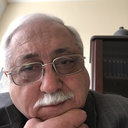Memory restoring and neuroprotective effects of the proline-containing dipeptide, GVS-111, in a photochemical stroke model.
کلید واژه ها
خلاصه
Local thrombosis of the frontal cortex (Fr1 and Fr3 fields), caused by combination of the intravenous photosensitive dye Rose Bengal administration with focused high-intensity illumination of the frontal bone, was shown to provoke a pronounced deficit in step-through passive avoidance performance in rats without concomitant motor disturbances. N-Phenylacetyl-L-prolylglycine ethyl ester (GVS-111) administered intravenously at a dose of 0.5 mg/kg/day, for the first time 1 h after ischaemic lesion and then for 9 post-operative days, with the last administration 15 min before testing, attenuated the deficit. This treatment significantly diminished the volume of the infarcted area. Thus, post-ischaemic injection of GVS-111 demonstrated both cognition-restoring and neuroprotective properties. The cognition-restoring effect is probably based on an increase in neocortical and hippocampal neuronal plasticity. Neuroprotective effects of GVS-111 combine antioxidant activity with the ability to attenuate glutamate-provoked neurotoxicity and block voltage-gated ionic channels, i.e. the compound mitigates the main metabolic shifts involved in pathogenesis of brain ischaemia.


